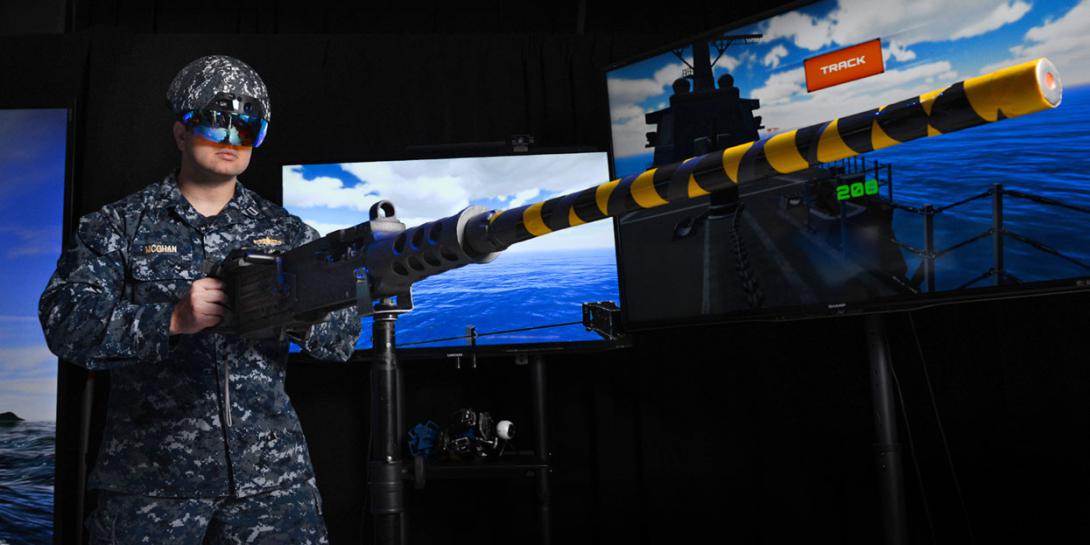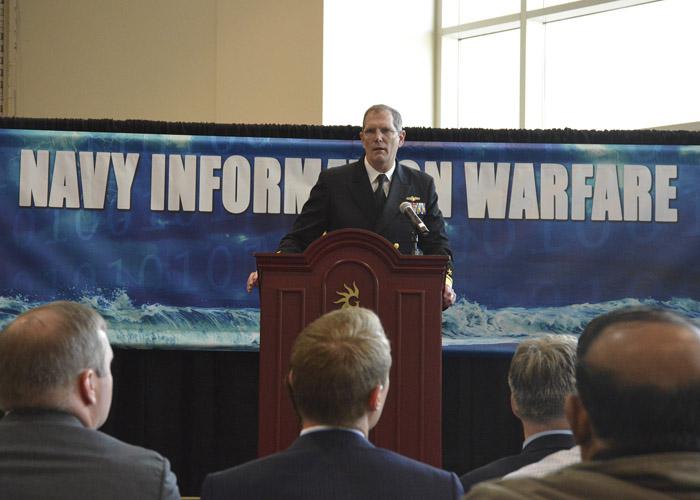Navy Fuses Information Into Warfare
The increased sophistication and unpredictability of adversaries’ cyber capabilities and tactics demands improvements in war-fighting readiness by revolutionizing how information warfare is executed in the U.S. Navy’s fleet. To address this challenge, the service is aligning and synchronizing efforts among its various communities and supporting multiple warfare areas with an information-packed warfighting model.
Modernization efforts of near-peer competitors require the Navy to project power during both peacetime and war. The maritime warfighter must be prepared to face non-state actors and less traditional threats that think outside the box. As the fleet lead for information warfare doctrine and tactics, techniques and procedures development, the Naval Information Warfighting Development Center (NIWDC) is enhancing the effectiveness of naval forces by fostering innovative ways to integrate information into the fight.
The center, which was established in March 2017, leverages the advantages of a multidomain environment, shifting from traditional platform-centric warfare tactics toward a holistic approach that capitalizes on warfighting power in multiple domains at sea and on shore.
Comprising a core staff and six mission area departments, the NIWDC provides expertise in command and control, cyberspace operations, electronic warfare, intelligence, meteorology, oceanography, information operations and space capabilities.
Warfighting development centers bolster the fleet’s high-end warfighting capabilities and readiness at the operational and tactical levels of war. In support of combatant, numbered fleet, strike group and other operational commanders, part of the NIWDC’s first year strategy has been to institute a road map to develop full operational capability and establish information warfare programs, processes and tactics that are relevant to the fleet.
The center’s concept of operations (CONOPS) development and experimentation efforts support new and emerging technologies that could transform maritime warfighting tactics. Outcomes from experimentation and doctrine development reveal gaps in doctrine, organization, training, materiel, leadership and education, personnel, facilities and policy that highlight the need to adapt to changing operational and tactical environments. The NIWDC’s integrated approach redefines maritime warfighting with information warfare capabilities that address advancing and evolving technology and information.
The NIWDC’s work includes advanced training as well as doctrine development and experimentation, subject matter expert support and warfighting assessments. This approach has led to notable accomplishments in experimentation and doctrine, including support for the fleet tactical grid, which introduced the concept of sensor integration through experimentation and intelligence support to visit, board, search and seizure operations.
As the fleet lead for information warfare, the center’s mission is to increase warfighting effectiveness across platforms and in all domains. It achieves this goal by providing advanced tactics and training at the individual, unit and integrated levels, transforming combat and day-to-day operations that aid global missions. These initiatives align across afloat and ashore information warfare capabilities and support tactical development and experimentation. The NIWDC also is developing live, virtual and constructive training capabilities to effectively train the fleet to meet objectives in the Navy’s Optimized Fleet Response Plan.
Another way the center envisions accomplishing its mission is through its standardized advanced training program for both individuals and teams. The Warfare Tactics Expert (WTE) and the Warfare Tactics Instructor (WTI) programs consist of a training pipeline that integrates the center’s mission areas so sailors have a comprehensive understanding of information warfighting. Graduates will be designated as WTEs and, with additional training, an elite subset of these individuals will become WTIs who will help meet the fleet’s demand for tactical experts in information warfare mission areas.
These programs will provide the Navy with first-rate midlevel information warfare officers who know how to use the newest tactics and training processes. Future plans for an enlisted program are being reviewed.
The center also will prepare the fleet for future conflicts by integrating all aspects of information warfare to enhance warfighting capabilities and battlespace awareness at the right place and the right time. The information warfare commander will lead efforts that allow the Navy to maintain a decisive edge in the information warfare domain.
The need for doctrine that assesses communications in contested environments is particularly acute to retaining sea control amid emerging threats. The NIWDC’s strategy to address this issue includes coordinating with other warfighting development centers to develop new doctrine as well as revise existing doctrine to provide support in areas where the fleet most needs it.
Recognizing the impact of innovation and fleet experimentation, the NIWDC began planning for Trident Warrior 2018 shortly after establishment of the command last year. The exercise, which takes place June 2018, will give the fleet an opportunity to evaluate innovations for tactics, techniques and procedures development in the information warfare domain in real time.
During the exercise, the NIWDC will assist with capabilities that help the Navy mitigate threats associated with cyberspace. The center’s participation will include data collection, reporting and technical analysis targeting cybersecurity issues. Information warfare is a focal point because improved information sharing and maintenance is crucial to warfighting success when maneuvering critical elements in a tactical situation.
The NIWDC plays a key role in transforming the fleet by aligning and synchronizing efforts among various information warfare communities. The center is supporting the effectiveness of naval forces and accelerating progress on cutting-edge capabilities that support operational plans, war-fighting, global information and operational environments, and day-to-day forward presence operations.
Lt. Cameron Woods, USN, is an intelligence officer, N-7, Training, and Synlethia Bagwell is a program analyst, N-5, Science and Technology/Innovation Department, Naval Information Warfighting Development Center, Norfolk, Virginia.







Comment
IO as a mission area?
"Comprising a core staff and six mission area departments, the NIWDC provides expertise in command and control, cyberspace operations, electronic warfare, intelligence, meteorology, oceanography, information operations and space capabilities."
According to JP 3-13 "Information Operations" Comprises of all the IRCs listed above. How do you place IO in with the IRCs and make it a Mission Area by itself? What does it do if not all of the IRC functions? Seems if your saying IO you only need one mission area. "and its IO"
Comments